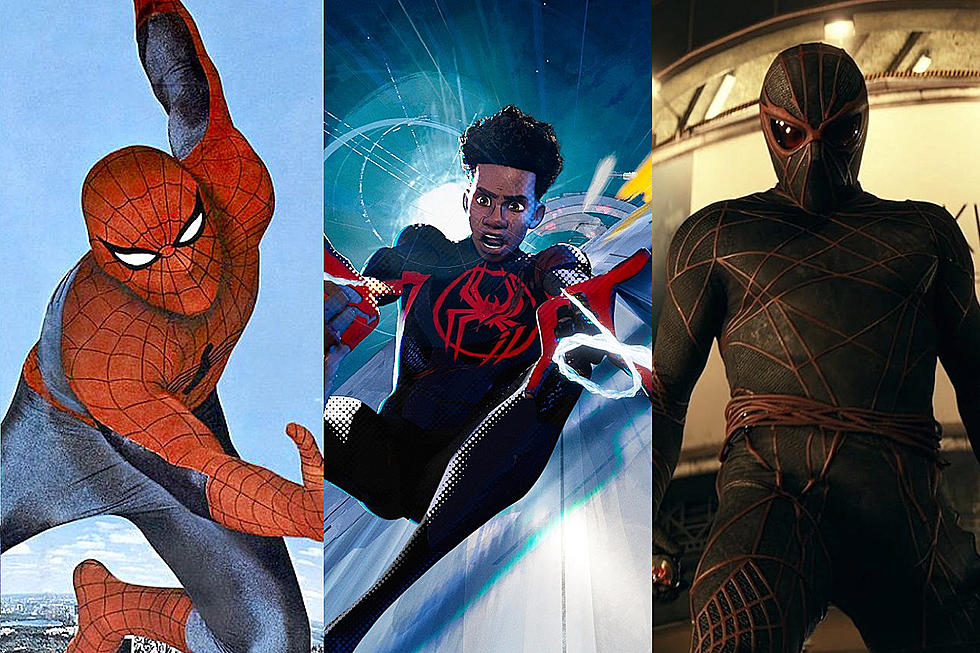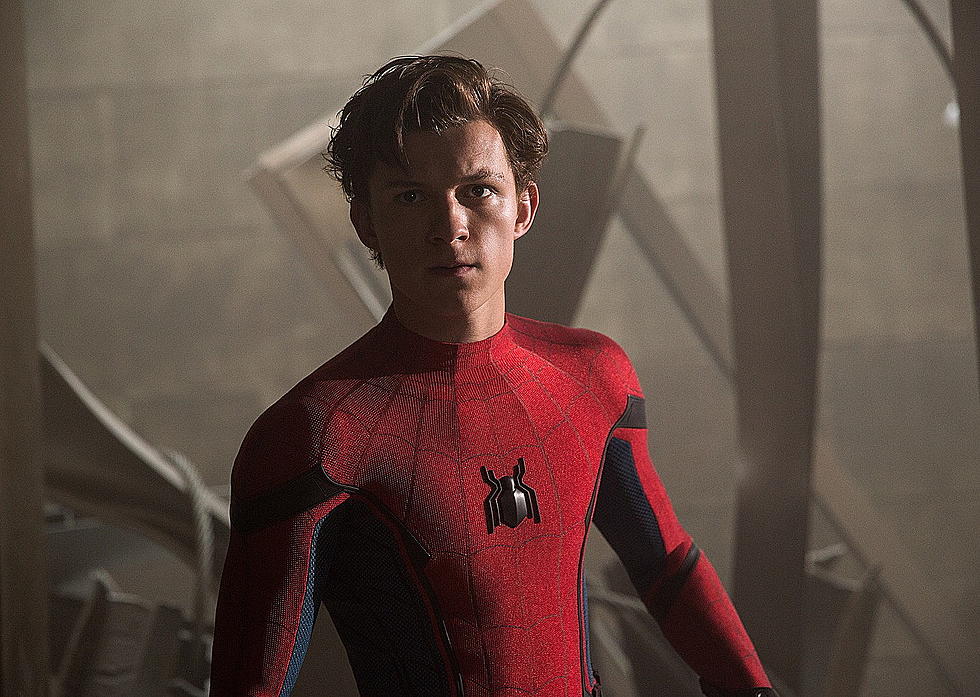
Spider-Man Lives Large Again: Big Time vs. the 1998 Spider-Man Reboot

I'm a Spider-Man guy. ComicsAlliance has a bunch of Batman guys, and that's great. I love Grant Morrison's Batman work as much as the next fella, but I've always been partial to Spider-Man. I'm not entirely unafraid to admit that I had a nearly unbroken streak of reading and buying every Spider-Man comic though most of the late 90s and the aughts, even the inexcusably terrible ones. (I'm looking at you, Get Kraven.)
So when I read the first two issues of Dan Slott and Humberto Ramos' new "Big Time" arc in Amazing Spider-Man, I couldn't help but notice that it seemed a little familiar: Peter's got a brand new, high-paying job at a science lab. He's got a tony new apartment in a swanky neighborhood. The Daily Bugle has been rebuilt from a disastrous collapse. A classic bad guy has returned, rejuvenated and re-equipped. And one writer has taken over for a team to give Spider-Man a singular voice.
All of which sounds remarkably like what was happening in the Amazing Spider-Man reboot in late 1998, when Marvel's top editors, dissatisfied with low sales and flagging interest in its stories about identity crises and Norman Osborn participating in secret rituals to get some vague power or some such, decided to completely restart the franchise with writer Howard Mackie and artist John Byrne. Looking back on the issue now, some of the surface similarities between the 1998 Amazing Spider-Man #1 and the first pair of "Big Time" issues are downright crazy.Aside from the larger plot similarities, there are a few more specific coincidences, including a scene in both issues which Captain America dresses down J. Jonah Jameson for not being nice enough to Spidey:


And both have scenes where the Avengers show up and illustrate about how important Spider-Man is:


And -- this one is just nuts -- the two labs where Peter works appear to employ the same guy (though at least now he's got enough experience to be the boss):


Given the number of overlapping elements, it's not unjustified to ask whether writer Dan Slott and artist Humberto Ramos are retreading old ground. But, so far, Slott and Ramos have managed to do a better job than Mackie/Byrne managed with a strikingly similar story setup.
For one thing, they've already brought the lab characters at Horizon into the story in a way other than just having some Spider-Man villain bust in and set science-y equipment on fire, although that does happen at the end of issue 649 with the Hobgoblin. (In the 1998 Amazing Spider-Man No. 1, it was the Scorpion, who seems to have a growing role in "Big Time," too, who did it).
 Slott also has some sort of plot developing with the mystery of an unknown member of the lab team, and there was a neat little moment in issue 648 where Peter's colleagues saw through his white lie about using his powers to avert a catastrophic accident. It's clear that these people are a little more perceptive physics-wise than the friends Peter is used to bluffing. Plus, it looks like Peter's at least going to do something at Horizon by virtue of the fact that we know he's getting a Tron costume (left) in issue 650.
Slott also has some sort of plot developing with the mystery of an unknown member of the lab team, and there was a neat little moment in issue 648 where Peter's colleagues saw through his white lie about using his powers to avert a catastrophic accident. It's clear that these people are a little more perceptive physics-wise than the friends Peter is used to bluffing. Plus, it looks like Peter's at least going to do something at Horizon by virtue of the fact that we know he's getting a Tron costume (left) in issue 650.
Even so, Slott is going to have to work a little harder to make the lab characters a little more memorable. They don't run together quite as badly as Mackie/Byrne's did, but I'll be danged if I can remember any of their names without going back to the book to check.
In the Byrne/Mackie issues, the major conflict within the lab at Tricorp was more about his colleagues (none of whom had much personality) doubting Peter's scientific ability, and Peter fretting about losing the job. It was all pretty rote, with Peter's inter-office rival pointing fingers and telling Peter not to get in his way, et cetera.
In "Big Time," the doubt element isn't really introduced -- Peter has proven himself to the other employees at the lab -- and it's more about whether Peter can actually handle the responsibility, which seems more in-line with the Spidey we all know. After all, it was Peter, not some rival, who let that wrestling money go to his head and failed to stop that burglar who killed Uncle Ben. Peter's his own worst enemy, and no high-paying gig is going to restore his confidence or make him any cooler under pressure.
In regards to the swanky apartment, Peter's new digs in "Big Time" are certainly nicer than what he's had in the past, but it's not a mansion like the apartment Byrne created. Or, you know, that room in Avengers Tower he had for a while. But there also hasn't been much story purpose yet for Peter to have such a swanky place. Hopefully something will come into play with that soon.

But at least Peter's paying for his apartment himself this time. In the 1998 version of Amazing, Mary Jane was footing the bill for Peter's pad while he and Aunt May chilled out in there, living off her modeling lucre while she conveniently gallivanted around outside the bounds of the story in one of Marvel's earlier attempts to write MJ out of Pete's life.

The Daily Bugle is being handled in a more interesting way now, too, as the former Front Line newspaper best known for its reporting during Civil War, injected with new vigor by getting the DB name back. In Mackie/Byrne's take, the Bugle...uh...got a new building (that mysteriously turned back into the old building, explanation-free, in a couple years).
And, of course, there are some major differences between the two stories. Mackie/Byrne's take involved Peter not even suiting up as Spider-Man for a couple issues (probably not the best way to kick off a series with a new No. 1) and some mysterious new Spider-Man (SPOILER: It turned out to be a Mattie Franklin, who went on to be Spider-Woman for about a minute). Plus, a lot of the first issues of the rebooted series dealt with the fallout of Norman Osborn's aforementioned power ceremony, which I'm willing to bet was pretty confusing for the readers who bought issue 1 thinking they wouldn't have to go back and buy those "let's wear robes and drink stuff out of chalices" comics.
"Big Time" is more of a fresh start, carrying over a few threads from previous issues, such as Peter's new relationship with NYPD cop Carlie Cooper, but serving as a relatively easy jumping-on point for readers who didn't pick up the "Brand New Day" issues.
Still, putting Peter Parker in anything but a hard-luck situation makes Spider-Man fans itchy and uncomfortable, as we learned when the readership roundly rejected the 1998 Spidey reboot. After the first three issues of the reboot, where the lab job was prominently featured, Mackie dumped the entire lab job plot thread and it didn't come up again until issue 9, where Peter's boss chewed him out for his "spotty attendance." The whole thing was finally put to bed in issue 16 when Peter was fired, and his fancy apartment was gone pretty soon, too, bringing him rather quickly back to poor old Peter washing dishes and wondering how he could afford to do the laundry. And Mary Jane "dying" in a plane crash. And the Sinister Six re-forming.
Everything old is new.
So will Peter ever be back in the poorhouse again? Of course he will. Ultimately, Peter Parker will always be locked in the throes of poverty, save for those few instances where Marvel tries to shake up the status quo for a few months. But as shakeups go, "Big Time" has the makings of being the best "Peter makes it big" story that I can recall. And sometimes detours like this can be a lot of fun.
(Except, as we learned back in 1998/1999, when they aren't.)
More From ComicsAlliance





![Dan Slott And Stuart Immonen Bring Norman Osborn Back In ‘Amazing Spider-Man’ #25 [Preview]](http://townsquare.media/site/622/files/2017/02/ASM-Featured.png?w=980&q=75)



